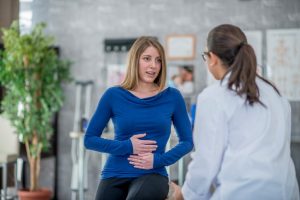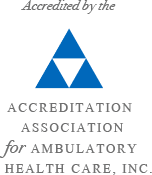How To Determine When You Need An Upper Endoscopy
 An upper endoscopy is a common procedure that’s used to identify – and in some cases, treat – problems in your upper digestive system.
An upper endoscopy is a common procedure that’s used to identify – and in some cases, treat – problems in your upper digestive system.
What Is An Upper Endoscopy?
An upper endoscopy is a nonsurgical procedure that allows a gastroenterologist (a doctor who specializes in diseases of the digestive system) to examine your upper digestive system. This area of the body includes your esophagus, stomach, and the beginning of your small intestine (duodenum).
During an upper endoscopy, your gastroenterologist will use an endoscope – a flexible tube with a light and tiny camera attached to it – to view your upper digestive system on a monitor.
Why Would You Need an Upper Endoscopy?
An upper endoscopy can be used to investigate symptoms or diagnose a disease or condition through a tissue sample (biopsy). In some cases, your doctor can also treat conditions during an upper endoscopy. For example, they may be able to widen your esophagus if it’s too narrow or stop a vessel from bleeding.
What Does Upper GI Series Treat?
An upper endoscopy can be used to identify/treat conditions that include the following:
- Heartburn
- Nausea
- Vomiting
- Chronic constipation
- Chronic diarrhea
- Polyps in your colon
- Stomach pain
- Difficulty swallowing
- Gastrointestinal bleeding
What is the Procedure & Recovery Process Like?
The following helps explain what happens before, during, and after your upper endoscopy:
Before an Endoscopy
You and your doctor will discuss the medications and supplements you take and whether you should take those before your procedure or afterward.
Your stomach will need to be empty before you have the procedure, so you will be instructed to not eat or drink anything for at least six hours before your upper endoscopy. If your doctor tells you to continue taking any of your regular medication, you should do it with only a sip of water.
During an Endoscopy
You’ll receive a sedative before your procedure begins. Your doctor will place a mouthpiece in your mouth, and as you lie on your side, they will guide the endoscope into your mouth, esophagus, and stomach. The procedure will probably be over in about 15 to 30 minutes, although the time can vary.
After an Endoscopy
You’ll be observed for about an hour, and your throat may feel sore. Your doctor will discuss their findings with you and will also notify your primary care physician. Any follow-up care will be discussed. Also, if a biopsy was performed, you’ll be notified about the results within a few days.
Since you’ve been under sedation, you’ll need to make sure that you have someone to take you home as well as relaxing for the rest of the day.
What Are the Risks Involved?
An upper endoscopy is a very safe procedure, but any type of procedure does carry some degree of risk.
Possible problems after an upper endoscopy include the following:
- Bleeding
- Infection
- A tear in your gastrointestinal tract
Your risk of complications can be lowered if you prepare for your endoscopy as instructed by your doctor. They will also let you know about any unexpected symptoms – such as vomiting, fever, chest pain, or shortness of breath – that warrant a call to the doctor or an emergency room visit.
If you’re experiencing any digestive tract symptoms, make an appointment today with GPDDC. Our top NYC gastroenterologists offer personalized, compassionate care in a state-the-art center designed for outpatient endoscopic care.


